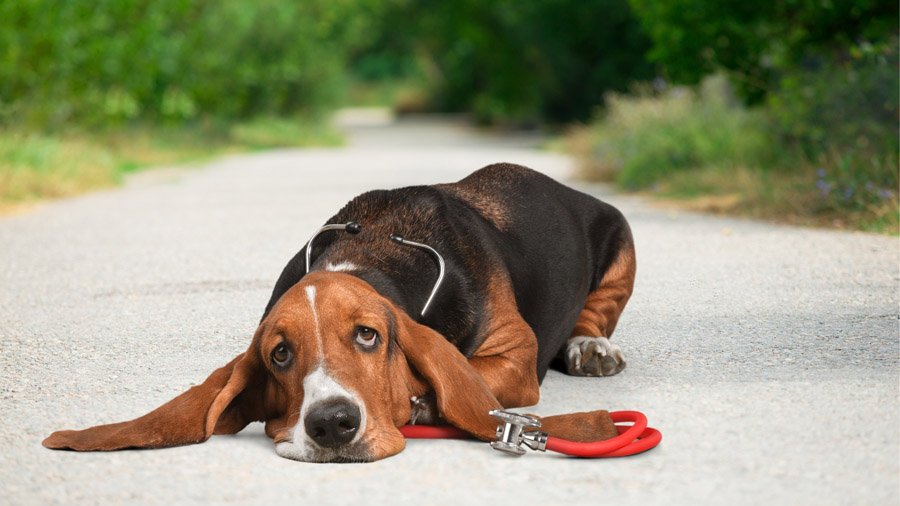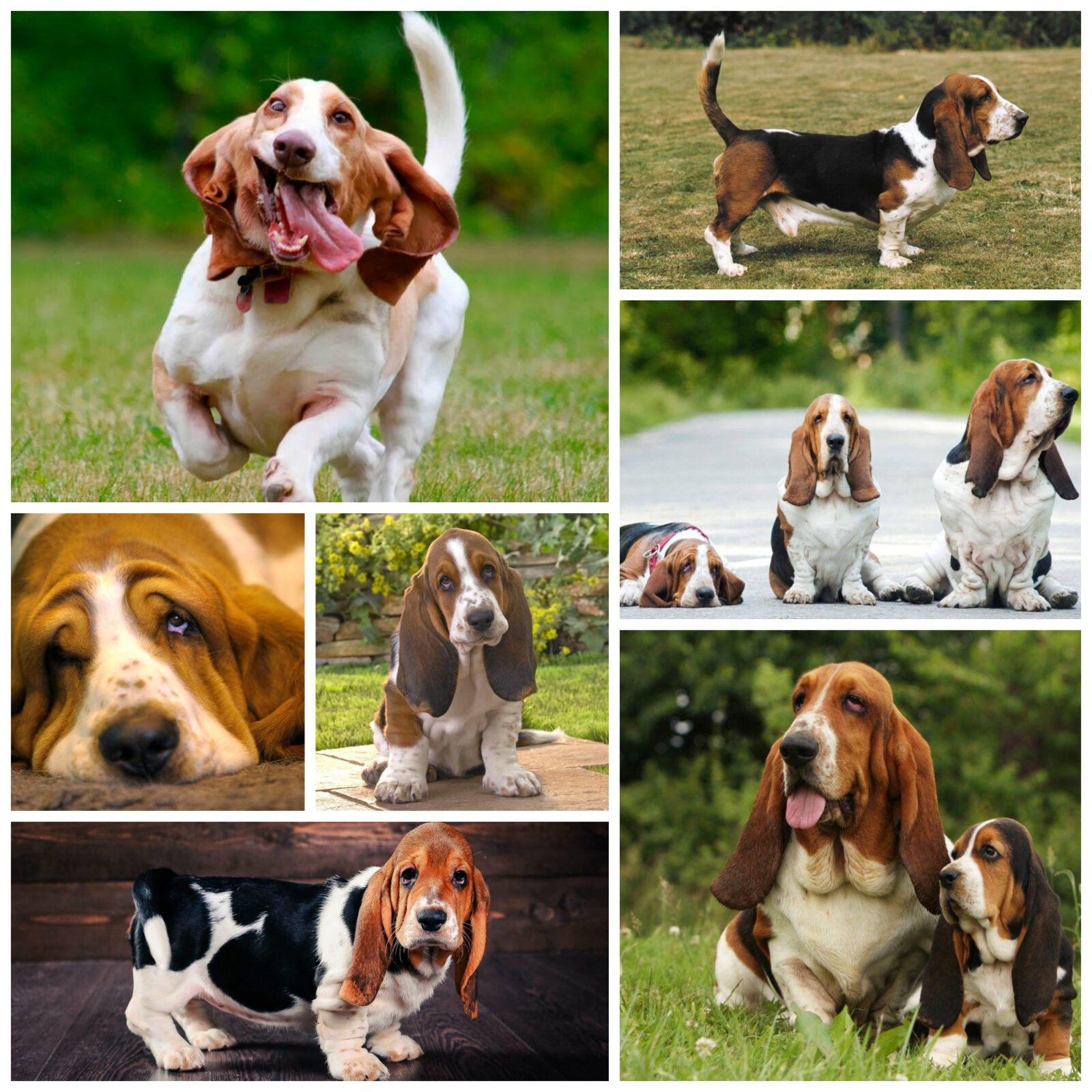
Краткое описание породы
Бассет-хаунд уже давно пользуется особой популярностью. Его часто можно встретить в различных рекламных роликах, а также в домах и на лужайках многих семей, которые желают иметь хорошего и преданного четвероногого друга. Благородный внешний вид и преданный характер делают эту собаку отличным питомцем практически для любой семьи.
У представителей данной породы очень развито обоняние. Это не странно, ведь собака была выведена для охоты. В этом плане бассетам смогут составить конкуренцию разве что собаки-ищейки. Остальные же, вряд ли, смогут посостязаться с ними.
Так как бассет-хаунды изначально выводились как охотничьи собаки, у них сохранился соответствующий природный инстинкт, поэтому они всегда норовят погнаться за потенциальной добычей. Особенности кожного покрова, а также длинные уши, свисающие до самой земли, дают бассету прекрасную возможность учуять добычу и, соответственно, догнать ее. Именно за эти качества бассеты ценятся охотниками.
Из-за того, что лапы бассета короткие, они не способны так быстро передвигаться, как другие крупные собаки. Но для охотника это очень хорошая особенность, ведь животное может незаметно подкрадываться к добыче. Еще одной особенностью собаки, которая весьма удобна владельцам-охотникам, является длинный хвост с белым кончиком. Он позволяет видеть собаку даже тогда, когда та находиться в высокой траве.
Собаки этой породы имеют громкий голос, поэтому их особенный лай отчетливый и пронзительный, он распространяется на длительные расстояния.
Находясь дома, бассет не будет проявлять особой активности, он ленив в этом плане. Питомец предан своей семье, очень приятный в общении и дружелюбный. Бассеты не любят находиться долгое время в одиночестве. Если питомца надолго оставить одного, то он, безусловно, будет скулить, и даже выть.
Бассет-хаунды являются любителями покушать, но в домашних условиях не проявляют особого желания к активным занятиям. Это становится причиной ожирения, которое, в свою очередь, приводит к проблемам с опорно-двигательным аппаратом.
Бассеты очень выносливы. Вы можете спокойно отправляться с ними на длительные прогулки, тем более это позитивно скажется на здоровье собаки и предупредит увеличение веса. Прогуливаясь с питомцем, не забывайте, что бассет – охотничья собака, поэтому он любит выслеживать. Не гуляйте без поводка, иначе рискуете тем, что ваш любимец может погнаться за потенциальным трофеем.
Бассет-хаунд является владельцем уникального в своем роде голоса. Можно говорить о том, что эти собаки не лают, а воют. Также они способны своеобразно бормотать, привлекая, таким образом, к себе внимание, или же выпрашивая еду. Благодаря такому своеобразному поведению, им удается выпросить со стола хозяина многие лакомства, которые не очень полезны для собаки. Не стоит идти на поводу у питомца. Тем более, многие продукты со стола хозяина могут нанести серьезный вред животному.
Бассеты, как правило, спокойны и уравновешены, они отлично ладят с детьми, а также с домашними животными. Главный недостаток этой породы — тенденция пускать слюни и выть во время одиночества или тревоги. Если вы готовы терпеть подобные странности, то бассет станет непревзойденным домашним любимцем и просто отличной собакой-компаньоном.
Основная информация
| Название породы: | Бассет-хаунд |
| Страна происхождения: | Великобритания |
| Время зарождения породы: | XIX век |
| Тип: | гончие и родственные породы |
| Вес: | 23 – 30 кг |
| Рост (высота в холке): | 33 – 38 см |
| Продолжительность жизни: | 12 – 15 лет |
|
Классификация МКФ:
|
Группа 6, Секция 1, Номер 163 |
| Цена щенков: | 210 – 1050 $ |
| Самые популярные клички: | список кличек для бассет-хаунда |
Оценка характеристик породы бассет-хаунд
| Адаптивность
(определение, означающее, насколько легко собака может приспосабливаться к изменениям в жизни) |
🐶🐶🐶🐶🐶 |
| Уровень линьки
(Уровень и частота выпадения волос у животного) |
🐶🐶🐶 |
| Уровень нежности
(Уровень и количество нежности и ласки, которую собака отдает взамен на внимание к себе) |
🐶🐶🐶🐶🐶 |
| Потребности в упражнениях
(Уровень дневной активности собаки) |
🐶🐶🐶 |
| Социальная потребность
(Необходимое количество контактов собаки с другими животными, а также людьми) |
🐶🐶🐶 |
| Квартирное содержание
(Фактор, определяющий уровень шума и иных неудобств, которые собака может доставлять хозяевам в соотношении размера квартиры к размеру собаки) |
🐶 |
| Груминг
(Количество купаний, расчесываний, а также необходимое количество сеансов профессионального груминга, необходимого собаке) |
🐶🐶 |
| Дружелюбность в незнакомой среде
(Особенности поведения собаки в обществе с незнакомыми людьми или в незнакомой обстановке) |
🐶🐶🐶🐶🐶 |
| Тенденция к лаю
(Склонность к лаю и его частоте и громкости) |
🐶🐶🐶🐶🐶 |
| Вопросы здоровья
(Потенциальный уровень состояния здоровья собаки) |
🐶🐶🐶 |
| Территориальность
(Склонность собаки к защите своего дома, двора или даже автомобиля хозяина) |
🐶 |
| Дружелюбность к котам
(Тенденция к терпимости к кошкам и пониженное проявление охотничьих инстинктов) |
🐶🐶🐶🐶🐶 |
| Интеллект
(Способность собаки к мышлению и решению возникающих трудностей (не стоит путать с обучаемостью!) |
🐶🐶🐶 |
| Воспитание и дрессировка
(Уровень сложности в обучении собаки выполнять определенные действия) |
🐶🐶🐶 |
| Дружелюбность к детям
(Фактор, определяющий насколько собака дружелюбна к детям, любит ли она с ними играть и терпеть некоторые детские шалости) |
🐶🐶🐶🐶🐶 |
| Игровая активность
(Понятие определяется самим его названием, и, как правило, встречается почти у всех собак) |
🐶🐶🐶 |
| Наблюдательность
(Способность собаки определить присутствие чужого на своей территории) |
🐶 |
| Дружелюбность к другим собакам
(Склонность собаки находить общий язык с другими своими сородичами) |
🐶🐶🐶🐶 |
Плюсы породы
- Обладает необычной внешностью;
- Сильно привязывается к владельцу;
- Дружелюбен в отношении окружающих людей;
- Терпелив по отношению к детям;
- Толерантен в отношении других собак;
- Не нуждается в большом количестве движений, но очень любит прогулки;
- Невероятно подвижный;
- За ним легко ухаживать.
Минусы породы
- Нуждается в понимающем владельце;
- По природе упрямый и своевольный;
- Бывает непослушным;
- Имеет привычку убегать;
- Любит лаять;
- Не поддается стандартной дрессировке;
- Имеет склонность к набору лишнего веса.
Внешний вид бассет-хаунда
Название породы происходит от французского слова «бас», что означает низкий. Именно из-за невысокого роста и появилось такое название. Маленький рост вызван особенностью физиологии животного: у него достаточно тяжелый скелет и мускулистое тело. Средний вес собаки составляет около 23–30 килограммов. А вот рост, как правило, составляет порядка 33–38 сантиметров. Бассеты — крупные собаки на невысоких лапах. Невысокий рост собаки является результатом карликовости, которую медики называют ахондроплазией. Но это не является той болезнью, которую следует пытаться вылечить. Такие размеры стали стандартом породы и заметно отличают этих собак от других сородичей.
У бассет-хаундов гладкая, короткая шерсть за которой относительно легко ухаживать. Большинство бассетов имеют трехцветный окрас, состоящий из пятен черного, коричневого и белого цветов. Эта расцветка считается классической. Правда, встречаются бассеты с рыжими пятнами на белом фоне, а также с белыми пятнами на рыжем фоне, и полностью рыжий окрас с белыми или лимонного цвета лапами. Иногда встречаются и серые бассет-хаунды. Такой цвет не желателен, так как чаще всего причиной нестандартного окраса является генетическое заболевание. Не стоит идти на поводу у собаковода, который будет предлагать вам, якобы, щенка с уникальным окрасом.
Бассет имеет округлый череп, и большое количество кожи на лицевой части головы. Такая несколько дряблая кожа делает взгляд бассета печальным, что, по мнению многих, добавляет животному особого шарма.
Фото бассет-хаунда:

История происхождения бассет-хаунда
В легендах говорится, что бассеты родом из Константинополя, откуда попали в Европу во времена крестовых походов. Правда это или нет – никому не известно. Англичане считают, что бассет является очень старой породой, которая уже была известна в Англии с XVI века. Доказательством этого они считают описание Шекспиром летней ночи: «Псы гончие мои, окрашенные в цвет песка, имеют мощные подгрудки. И сметают раннюю росу опущенными головами. У них колени согнуты и животы обвисши. Не торопясь они идут по следу, но их совместный лай звучит, как звон». Хотя данное описание и подходит для бассета, некоторые кинологи утверждают, что описанные признаки также могут соответствовать южному хаунду. Конечно, данная дилемма нерешаема, потому что на самом деле никто не может знать, о ком писал Шекспир.
На самом же деле бассет-хаунд родом совсем не из Англии, а из Франции, хотя вывели породу и дали ей название, переведя с французского, именно британцы. По-настоящему же популярны эти собаки стали благодаря американцам. Бассет-хаунд считается потомком двух французских пород: уже несуществующего бассета д’Артуа и артезианско-нормандского бассета. В 1874 году британские селекционеры вывезли из Франции группу этих собак в свои владения. В результате вязки была получена переходная порода, которую позже скрестили с бладхаундом. Это было первое в истории искусственное оплодотворение, учитывая большую разницу в росте. Именно от бладхаунда бассет перенял свои главные признаки: отличное обоняние, сильно выделяющуюся черепную коробку, свободно свисающую и образующую складки кожу. С того самого времени было запрещено вывозить собак, а выведение бассет-хаунда в Англии развивалось самостоятельно.
В 1880 году бассет-хаунд был впервые продемонстрирован на выставке в Вулверхэмптоне, а в 1883 году был создан первый Клуб почитателей бассет-хаунда. Большой поклонницей этой породы стала жена короля Эдуарда VII, Александра, собаки которой также принимали участие в выставках. Одна из них даже получила награду на престижной выставке в 1909 году.
В Европе до конца 60-х годов ХХ века, порода оставалась неоднородной. Случалось, даже такое, что собаки из одного выводка могли иметь совершенно разные анатомические признаки: высота в холке колебалась в пределах 23-30 см, а иногда даже достигала 36 см. Это не являлось единственным отличием, потому что собаки отличались и по своему внешнему виду. Первый образец породы был представлен только в 1955 году. Это было заметным переломным моментом для развития породы. Были утверждены основные признаки породы, что дало направление в работе селекционеров, которые после многих лет работы смогли вывести такого бассет-хаунда, который знаком нам сегодня, то есть собаку с удлиненным туловищем, мощной костью и короткими, сильными лапами. По сравнению со своими предками, современный бассет имеет намного больше кожи, а также значительно больший вес.
Что удивительно, во Францию эта изначально французская порода вернулась только к 1955 году и до наших дней остается достаточно немногочисленной. В этой стране бассетов имеют, по большей части, любители, поклонники породы, что конечно не способствует развитию популяции. В Англии бассеты пользуются огромной популярностью, однако в Штатах они бьют все рекорды популярности. Во Франции ежегодно регистрируют около 800-1000 единиц потомства, в Англии – 2500-3000 особей, а вот в Штатах более 20000 особей!
Характер бассет-хаунда
Содержание и уход
Дрессировка и обучение бассет-хаунда
Здоровье и болезни
Несколько интересных фактов
- Собака детектива Коломбо, героя всем известного детективного сериала, была породы бассет-хаунд. Ее взгляд, полный безразличия, очаровал многих зрителей, которые заинтересовались породой именно благодаря сериалу.
- Как и все гончие, бассеты трудно поддаются дрессировке и воспитанию.
- Длинные уши бассета играют для животного важную роль. Они «поднимают» запахи с земли и направляют их к носу собаки.
- Постоянная линька бассета обязывает хозяина производить собаке ежедневное расчесывание.
- Шерсть бассета имеет маслянистую оболочку, которая может специфически пахнуть. Не стоит пытаться смыть эту естественную защиту.
- Бассеты могут пускать слюни.
- Если бассет-хаунд поймает какой-то запах, то он может последовать за ним.
- Содержать собаку этой породы лучше на огражденной территории.
- Лучше всего производить дрессировку бассета в специальном классе.
- Бассет, как и все гончие, не воспринимает жестких методов обучения. Проявите терпение.
- Бассет-хаунды часто страдают от повышенного газообразования. При подозрении о возникновении такой проблемы нужно обратиться к ветеринару.
- Из-за особенности кожи бассета, эти собаки склонны к выделению слюны, особенно во время приема пищи и пития. Если для вас это не совсем подходит, то лучше отказаться от покупки щенка этой породы.
- Реальной проблемой для бассетов является ожирение. Они обожают хорошо поесть, поэтому склонны к перееданию. В случае полноты у собаки будут развиваться проблемы с опорно-двигательным аппаратом. Режим кормления нужно организовывать правильно, руководствоваться советами ветеринара, а не рекомендациями на упаковке с кормом для собак.
- Так как эти собаки склонны к вздутию живота, которое, в отдельных случаях, может привести к смертельному исходу, их нужно кормить 3 раза в день небольшими порциями. После еды необходимо наблюдать за собакой, чтобы удостовериться, что все хорошо.
- Особого ухода требуют длинные уши бассет-хаунда. За ними нужно тщательно следить, вовремя мыть и обрабатывать специальным раствором.
- Даже если ваш бассет-хаунд кажется вам сильным и здоровым, все же лучше отказаться от прыжков, а во время поездок в машине держать его на руках и фиксировать, таким образом, позвоночник.
- Две трети веса бассета находится в передней части туловища. Это практически не дает собаке плавать.
Питомники и заводчики
Материал мы заимствовали с замечательного сайта наших партнеров DOGCATFAN.COM о кошках и собаках, автор dogcatfan
